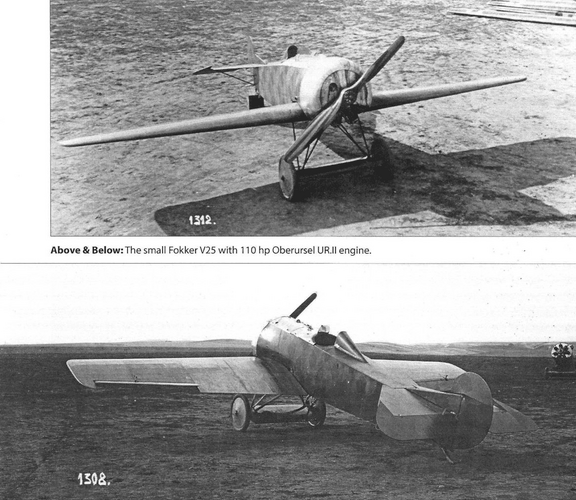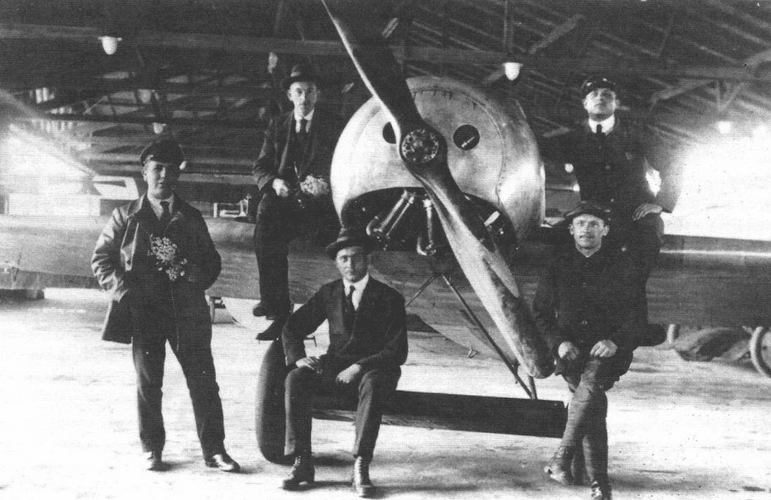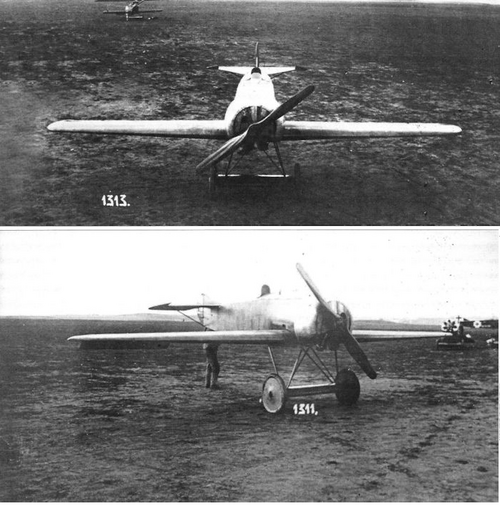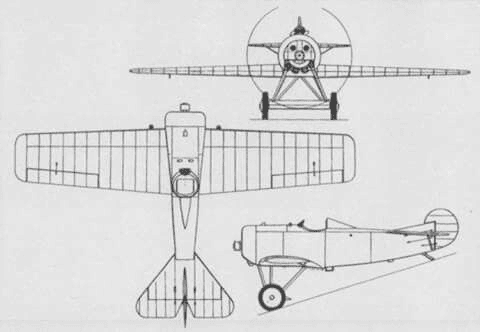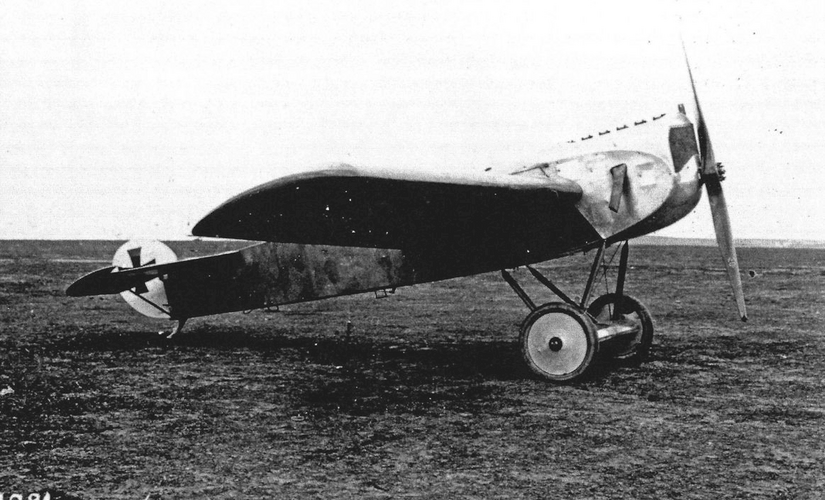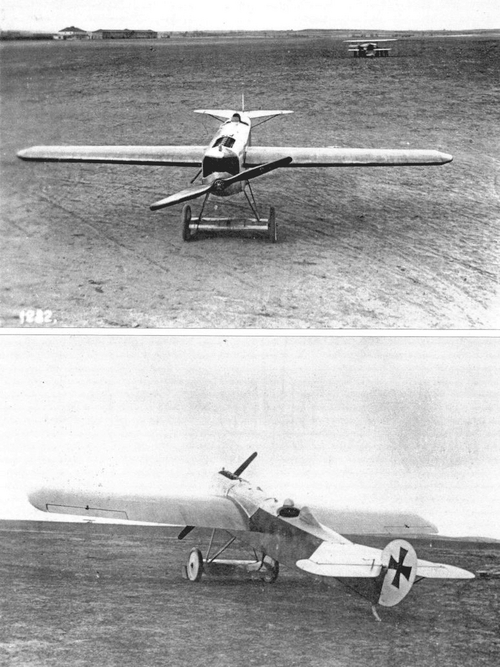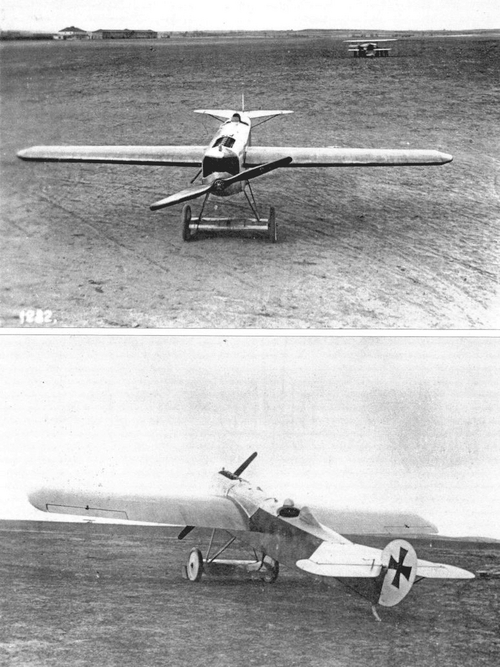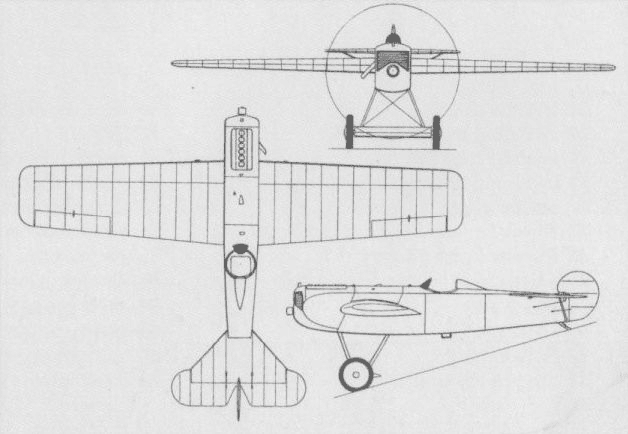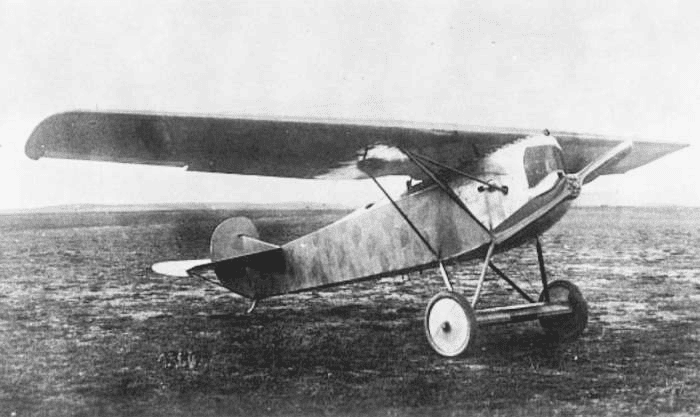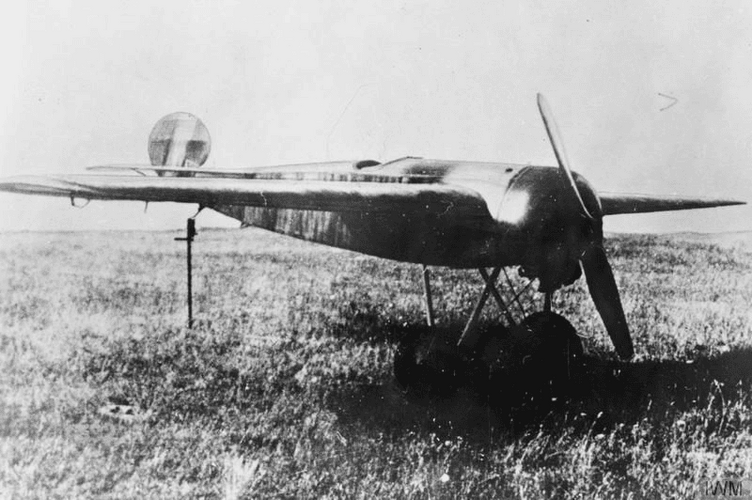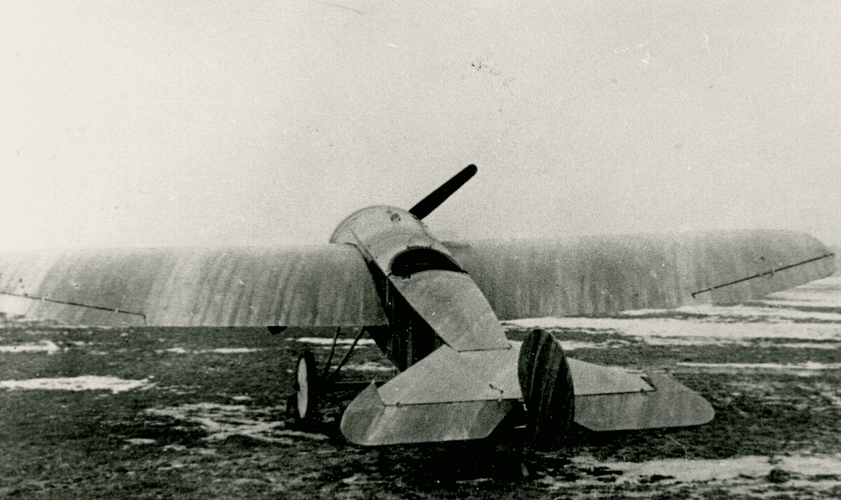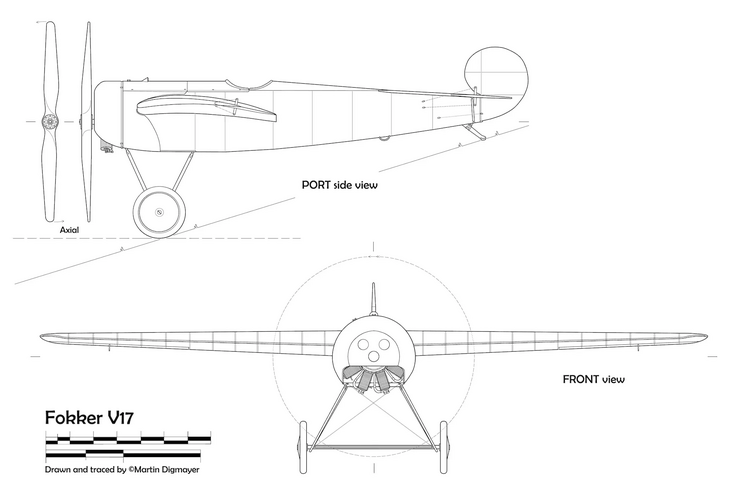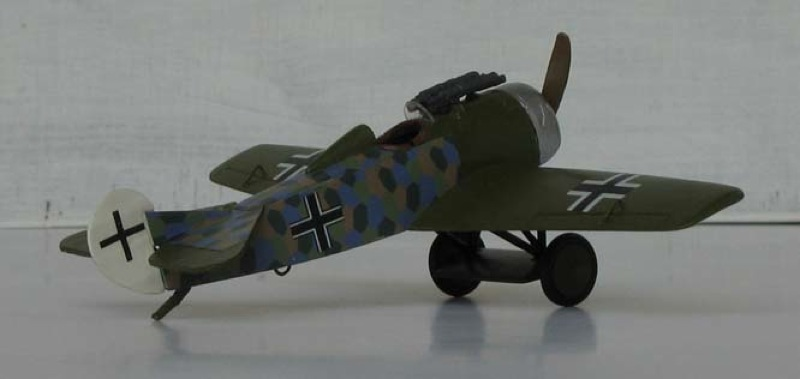A few details of these Fokker 'V' for Versuchflugzeug fighter types:
The V 17 was part of the Fokker V 4 airframe evolution. While the V 4 was refined into the service Dr.I, its original fuselage design also formed the basis for the 1917 V 9 and 1918 V 14 biplanes. So, although created from Dr.I fuselage and tail components, the later designs are viewed as V 4 derivatives.
(Just for the record, the Fokker V 14 biplane fighter was powered by a 160 hp Steyr rotary - another copy of the French Le Rhône - and had a span of 7.62 m.)
The obvious difference for the 1918 V 17 was the use of Reinhold Platz's cantilever monoplane wing - a plywood-covered, stressed-skin structure spanning 7.19 m . According to most sources, the V 17 had a 110 hp Oberursel UR II. Others claim that the V 17 was actually demonstrated by Antony Fokker while powered by a captured 110 hp Le Rhône. The V 17 was rejected by the Luftstreitkräfte because its mid-/shoulder-placed wing block much of the downward visibility from the cockpit.
At Antony Fokker's request, Platz completed drawings for a Mercedes-powered V 17 derivative in about a day and a half. The prototype V 20 was completed within a week and was flown at Schwerin by test pilot Paul Weidner. The V 20 was powered by a 160 hp Mercedes D IIIa straight-6 engine. The V 20 was sent to Aldershof but, for whatever reasons, Anthony Fokker decided not to submit this prototype for trials.
I assume that, like the V 17, the V 20 had a 7.62 m span ... but I'm not sure. At any rate, what followed was the Fokker V 23 which differed from the V 20 primarily in having an extended span of 8.78 m. It would be tempting to see the V 23 as a re-winged V 20. And that is what it was - conceptually. But Platz had already demonstrated that his prototype erecting shop team (with some 'borrowed' production line workers) could assemble a new prototype in just under a week. With that in mind, it was probably quicker and more efficient to create a new V 23 prototype from scratch.
The layout of the 1918 Fokker V 25 low-winged monoplane fighter was inspired by the Junkers J 9 (D.I) fighter which Antony Fokker had flown a number of times (as a director of the Junkers-Fokker-Werke AG). Previously the Luftstreitkräfte had objected to low-wing aircraft, reasoning that this layout provided no protection for the crew(s) should the aircraft overturn on landing. The Junkers J 9 demonstrated that providing a roll-over pylon was a comparatively trivial matter.
As for associations with the I-16, there are no similarities between that Polikarpov and the V 25 that are not apparent in any close-coupled aircraft design with low-set wings. On the V 25, those low-set wings sprang from Fokker's realization that his visibility from the Junkers J 9 was far superior to Platz's mid-/shoulder-mounted designs. But, going back to Aldershof trials, while roll-over issues may have been solved, the Luftstreitkräfte still saw advantages to the parasol monoplane layout.
To modern eyes, the V 29 parasol fighter may well resemble "a DVIII with DVII engine" but that ignores the chronology. The inline V 29 was created in parallel with the rotary V 28 (which later entered service as the E.V before being redesignated as the D.VIII). So, no great surprise that the V 29 resembled the production variant of the V 28. But 'resembled' is the operable word. Platz had learned from his V 23-to-V 25 experience and, from the outset, designed the V 29 airframe to be larger than that of the V 28.
At the end of Oct 1918, Fokker V 29 was selected the best overall design for the third fighter fly-off contest at Aldershof. However, there was no time for a production order to be placed before the Armistice was announced. Some have suggested that this may have been good fortune - the V 29 tended to 'float' while landing and Platz's cantilever wing design had begun to reach its speed limits. (Comment is also made about Platz's preference for ailerons without aerodynamic balancing ... although, if needed, that solution could have been readily applied to production types.)
The V 29 was powered by a 160 hp Mercedes D III (with a 185 hp BMW IIIa offered as an alternative). Initial span was 9.50 m (with a 13.60 m2 area) later increased to 9.69 m (with a 14.30 m area). Oddly the V 29 competed directly against the armoured Fokker V 37 at Aldershof. The latter was a direct conversion of the Fokker V 27 airframe - another parasol fighter type, this time powered by an experimental Benz Bz.IIIbo V8 engine.













